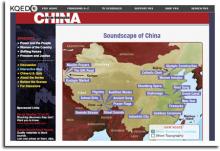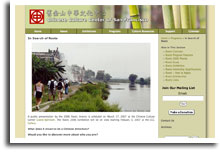New York Times: China Finds Poor Quality on Its Store Shelves. China said on Wednesday that nearly a fifth of the food and consumer products that it checked in a nationwide survey this year were found to be substandard or tainted, underscoring the risk faced by its own consumers even as the country’s exports come under greater scrutiny overseas.
No question. China has been getting pounded by the press as of late for all kinds of safety lapses. Unfortunately, we no longer live in an era where environmental, health and safety problems in China are “their” problems. Because we breathe the same air and use the same manufactured products, “their” problem is “our” problem as well.
So far, our government does not have a solution to this crisis and neither does the Chinese government. While the politicians can pontificate and legislate all they want, ultimately this will boil down to an enforcement issue. How can we “trust but verify” that Made in China products are safe?
The answer will probably come from the private sector. Whichever company can step into the void by offering a solution to test the safety of Chinese products can act as a gatekeeper to all of China’s imports—and collect a treasure in tolls along the way. The cost of testing will be paid by Chinese manufacturers who must earn the trust of the world market now that the safety of their products is tainted. So, who will it be?

 As a child, Chinese New Year was a time to receive red envelopes (红包) and eat sticky rice cake (年糕) or nian gao. It is quite easy to be a child during Chinese New Year. However, what about the adults? Whatever customs we picked up, if any, from our parents, one day, each of us will have to decide what customs and traditions we pass on to our sons and daughters.
As a child, Chinese New Year was a time to receive red envelopes (红包) and eat sticky rice cake (年糕) or nian gao. It is quite easy to be a child during Chinese New Year. However, what about the adults? Whatever customs we picked up, if any, from our parents, one day, each of us will have to decide what customs and traditions we pass on to our sons and daughters.